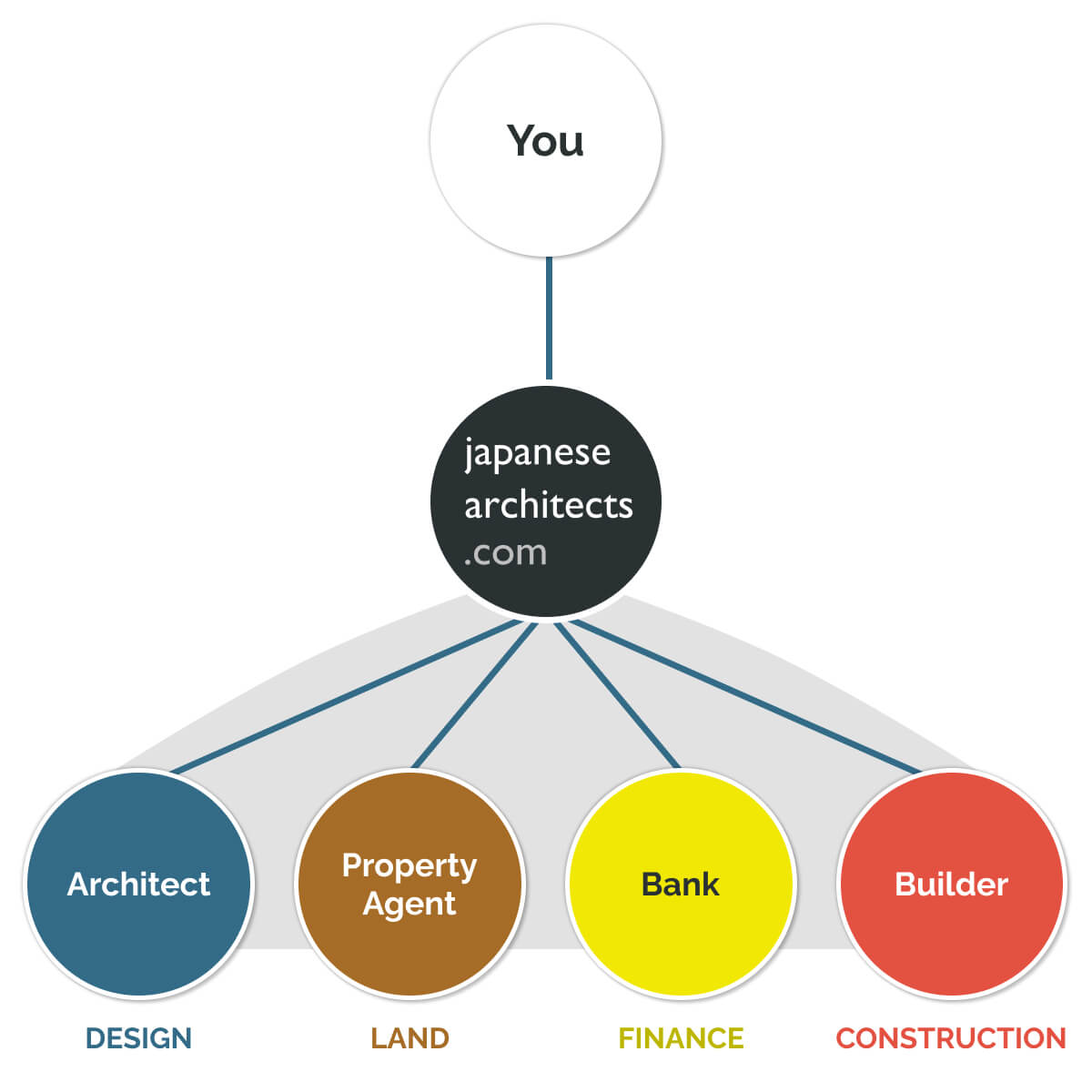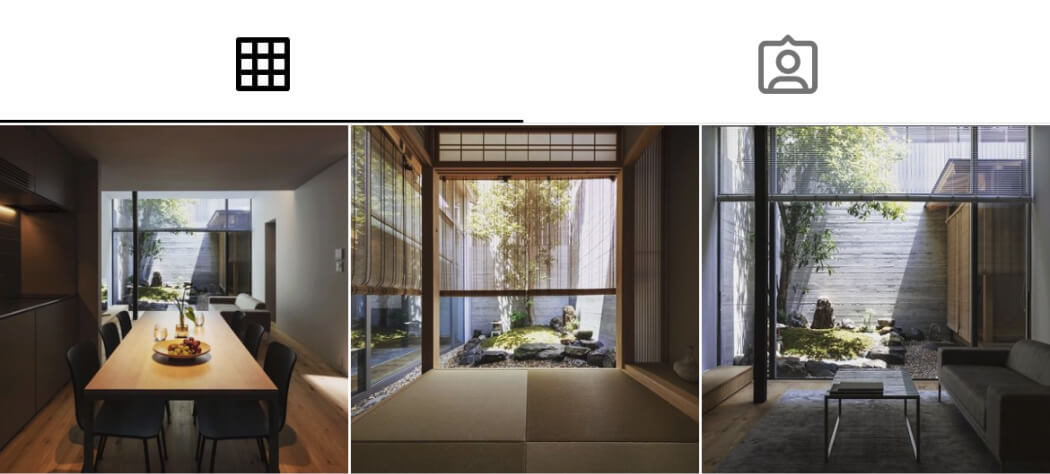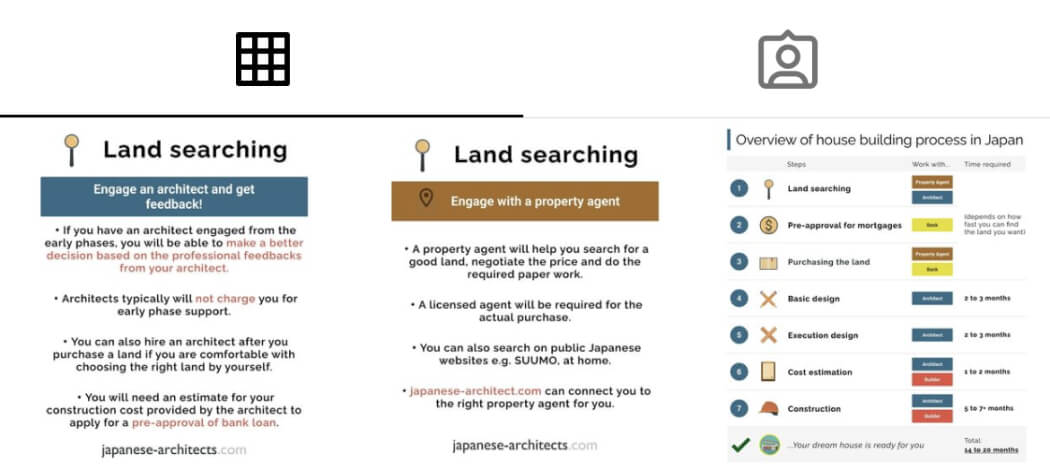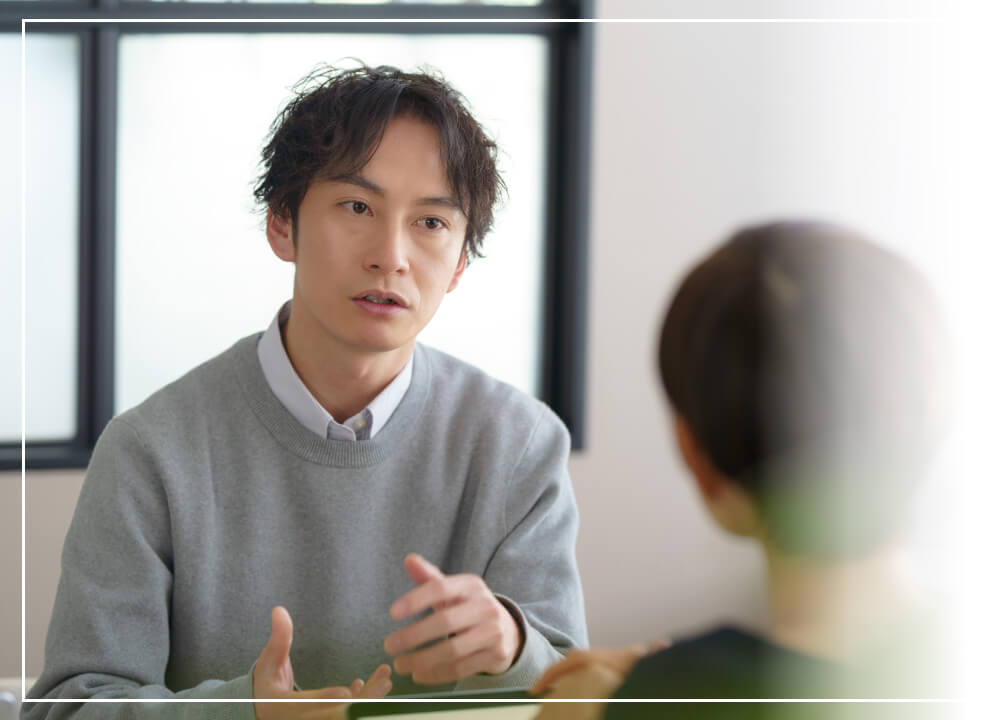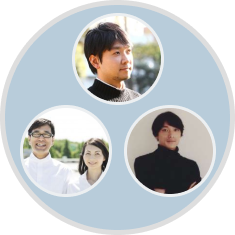The components and terms of Tea Ceremony Rooms(茶室) ! Check out the 10 examples of architect's works
This article provides a thorough explanation of the basics of tea ceremony rooms(茶室), including components, layout, rules, and terms along with 10 examples of tea ceremony rooms created by architects. It also introduces the key to create a tea ceremony room in your home and its charms. Creating a tea ceremony room in your home is not difficult. However, many people may feel that creating a tea ceremony room is somewhat difficult. This article provides basic knowledge about tea ceremony rooms, including the types of tea ceremony rooms, and easy-to-understand explanations of how to built a tea ceremony room in your house, from a full-fledged tea ceremony room to a casual, enjoyable tea ceremony room. After reading this, you will be able to realize your ideal tea ceremony room at home.
What is a tea ceremony room (茶室)?
The tea ceremony room (茶室) is said to have originated around the Muromachi period (1333-1573) as a place for enjoying entertainment, where the host (= the master) of the tea ceremony served tea to the invited guests. The tea ceremony room then changed over time, giving rise to two styles and ways of enjoying tea: the Shoin tea ceremony room and the Soan tea ceremony room.
1-1. Shoin tea ceremony room
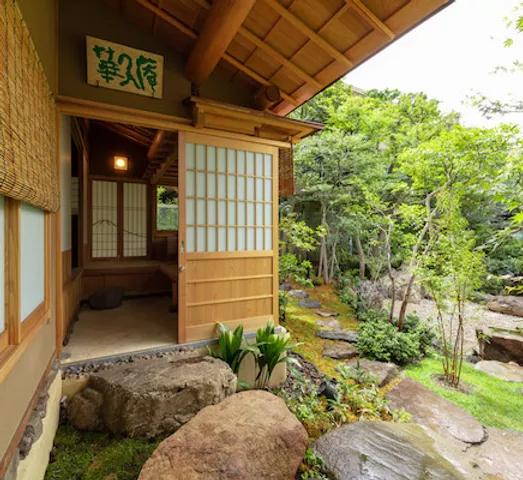


Gradually, decorative objects such as tea utensils and paintings were placed in the room where tea was served, and people began to enjoy tea while looking at them. The room was later called a "Shoin" tea ceremony room, as a floor, shelves, and an attached library were added to the room to hold these decorative items.
The Shoin tea ceremony room is a space where tea is served while enjoying the elegance of the entire room, including the floor and shelves as well as the ornaments.
1-2. Soan tea ceremony room
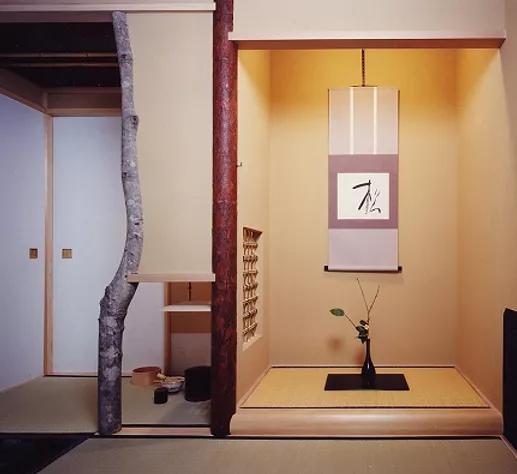


Later, the Soan tea ceremony room was born, incorporating the Wabi style, which emphasizes beauty in modesty. Unlike the elegant Shoin tea ceremony room, the Soan tea ceremony room uses simple materials such as logs, bamboo, and clay walls that were used in private homes of the time. Tea ceremony rooms were usually small, two or three tatami mats in size, so that the owner and guests could easily communicate with each other.
Sen no Rikyu is said to have perfected the style of the Soan tea ceremony room, and the National Treasure "Taian (待庵)" tea ceremony room, which is presumed to be built by Sen no Rikyu, is also two tatami mats in size. Thus, a tea ceremony room is not only for drinking tea, but also for enjoying the entire space.
2. What constitutes a tea ceremony room?
Here are some typical items that make up a tea ceremony room. Knowing these will be very helpful when considering a tea ceremony room for your house. Also, please read to the end because it will help you to facilitate a meeting with architects.
2-1. Dewy ground (tea garden)

The garden surrounding the tea ceremony room is called "Roji(露地)", or tea garden, and is said to be the space that separates the everyday world from the extraordinary world of the tea ceremony room. Guests wait for the master at the waiting area which is called(腰掛待合) in the open-air garden, and when called upon, they walk through a passageway paved with stepping stones to the tea ceremony room.
Plants and stone lanterns are placed in the garden, and visitors enjoy the atmosphere as they move about. When you arrive at the entrance of the tea ceremony room, you cleanse your hands and mouth with water from the stone basin in front of the room.
2-2. Crawl-in entrance
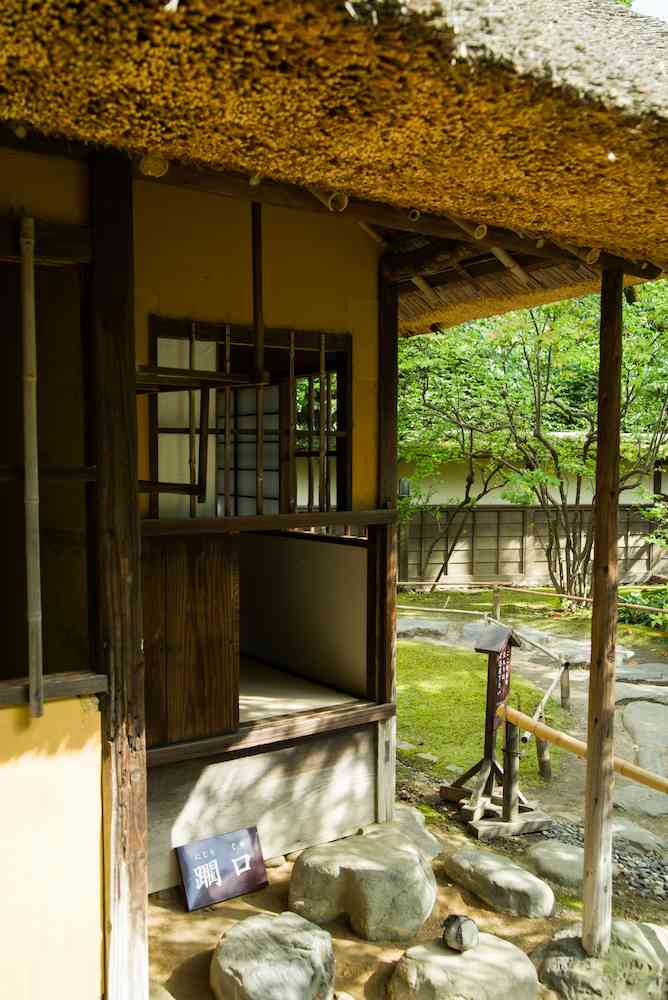
This is the entrance to the tea ceremony room, which is approximately 60 to 70 cm square. It is said that even a person of high rank bows his or her head, indicating that all people are equal. The crawl-in entrance is usually used in a Soan tea ceremony room, while in a Shoin tea ceremony room, the entrance is usually a normal entrance.
2-3. Furnace

A furnace uses charcoal to boil water in a tea kettle; from November to April, during the cold season, a furnace embedded in tatami mats is used, and from May to October, a furnace called a fūrō(風炉), which is a type of furnace to put on a floor, is used.
Originally, water was heated by a fūrō, but with the spread of the Soan tea ceremony room, the furnace was embedded into the tatami mats. It is said that this was done to keep guests close to the furnace in winter to keep them warm, and to keep them away from the furnace in summer and around that time to prevent it from getting too hot.
2-4. Floor
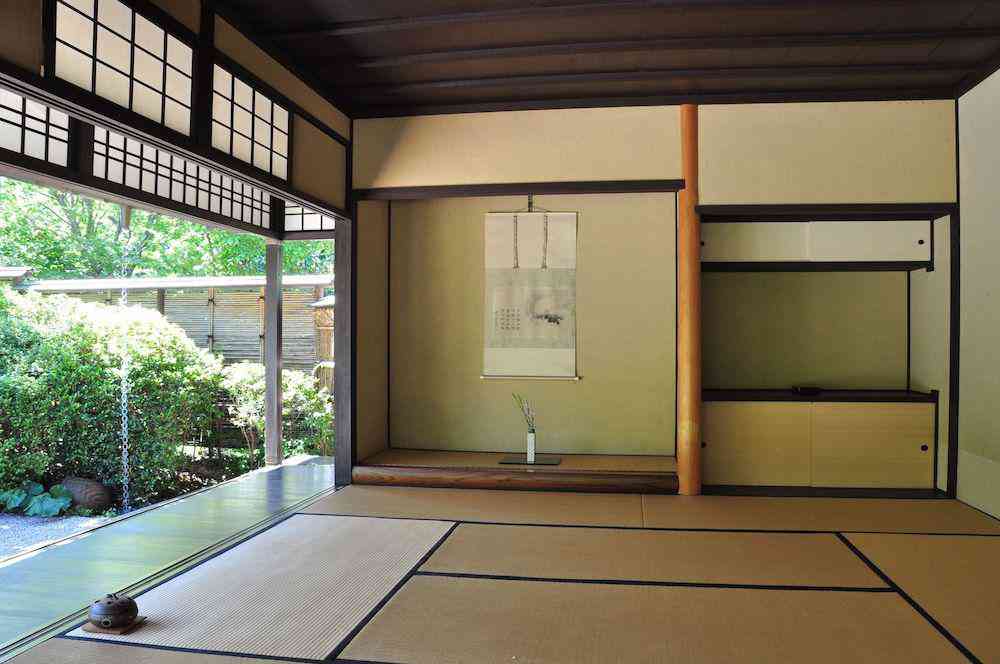
The floor is the so-called tokonoma (床の間), which is decorated with hanging scrolls, flowers, and other decorations. When entering a tea ceremony room, one should first approach the floor to appreciate these decorations.
The vertical post in the center of the tea ceremony room on the floor is the tokobashira(床柱), the horizontal otoshigake(落とし掛け) is passed horizontally over the floor, and the tokogamachi(床框) is placed horizontally below the floor. On the flat area one step up from the tatami mats, tatami mats or boards are placed.
Each species is made from a wide variety of woods, including Karin (Japanese pear), Japanese zelkova, Maple, and Shidan (ebony). Although there is no rule that says you must use a particular type of wood, red pine logs with bark are popular in tea ceremony rooms, as they take advantage of the natural shape of the wood.
2-5. Ceiling
The ceiling is made differently in the Shoin tea ceremony room and the Soan tea ceremony room. In the Shoin tea ceremony room, the ceiling is uniformly high, but in the Soan tea ceremony room, the ceiling is of different heights in the same room. The ceiling in the area where the master sits is lower than the area where the guests sit, showing respect for the guests.
In addition, the ceiling for the guests is elaborately finished with Ajiro-tenjyo(網代天井) or Keshyo-yaneura(化粧屋根裏). On the other hand, the ceiling for the host is a simple "noren-tenjyo" or "gama-tenjyo".
Typical ceiling finishes in Shoin tea ceremony rooms include gou-tenjyo(格天井) and saobuchi-tenjyo(竿縁天井) ceilings. The gou-tenjyo is especially seen in castles and temples, and is a finish that gives a sense of dignity.
2-6. Water room

The mizuya(水屋, water room) is a place for preparing and cleaning up after serving tea. Shelves are built to hold tea bowls and utensils, and sometimes there is a water supply and a water tank. In the Shoin tea ceremony room period, a simple shelf called a chayu-dana(茶湯棚) was used instead of a separate mizuya.
Later, Sen no Rikyu is said to have created the prototype of the mizuya with a built-in shelf and water bucket. As time went by, more shelves and storage spaces were added, and the form of the modern mizuya was created. In some cases, the way in which shelves and other shelves are built is determined by the style of the owner.
3. Building a tea ceremony room in your house! Its charm and tips
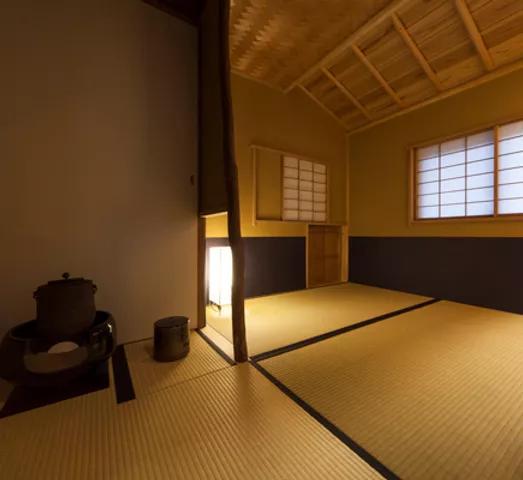


Tea ceremony rooms are very attractive not only for their history but also for their profound enjoyment. Many people would like to build a tea ceremony room at home and enjoy tea in a relaxed atmosphere. However, many people are honestly concerned that building a tea ceremony room might be too difficult.
So here are some specific points to consider when creating a tea ceremony room in your house. If you keep this in mind, you should be able to easily realize a tea ceremony room.
3-1. What is the attraction of building a tea ceremony room?
What is the appeal of having a tea ceremony room in your home? I think one is that it frees you from the busyness and stress of daily life, and allows you to enjoy the elegance and wabi of the tea ceremony and enrich your mind.
Therefore, when creating a tea ceremony room, we recommend you not be too bound by rules and regulations, but rather make it a place that you can truly enjoy yourself. Tea ceremony rooms have a long history of change in accordance with the way people enjoy using them. If you worry too much about the rules, you may end up with a formal tea ceremony room that you cannot truly enjoy.
Of course, if you want to enjoy the prestige of a tea ceremony room, you may pay attention to the details. On the other hand, if your ideal tea ceremony room is simple and easy to enjoy, there is no problem with that. The points I am about to mention are only a guide. Let's create a tea ceremony room that we can truly enjoy without thinking too much about the details.
3-2. Consider the layout of the room
When considering the layout of a tea ceremony room, there are three key factors to consider: size, floor, and water closet. Since these three factors also affect the overall layout of the house, we recommend that you consider them at the earliest possible stage.
Size
The size of a tea ceremony room is often more than four and a half tatami mats which is hiroma(広間) for a Shoin tea ceremony room, and for Soan tea ceremony room, koma(小間), which is less than four and a half tatami mats is usually seen. However, there is no problem in creating a tea ceremony room at home according to the size of the room that can be taken. The size of a koma or a hiroma is only a way of dividing a tea ceremony room, and the size of a koma or a hiroma depends on the purpose of the tea ceremony room and the situation in which it is built.
For example, you may create a Shoin tea ceremony room with a small number of tatami mats to enjoy stylistic beauty, or you may enjoy wabi in a spacious Soan tea ceremony room.
Floor
In a shoin tea ceremony room, the floor is generally 1 ken (1.5 m) wide and 3 shaku (3.5 m) deep. In the case of the Soan tea ceremony room, the width is 4 or 5 ken and the depth is 2 shaku. However, you can be flexible and make it to fit the space available in your home.
If there is not enough room in the floor plan to take up the floor, you can use a portable floor. A oki-doko(置き床) is a portable, compact floor that can be placed on the tatami mats in the tea ceremony room when needed and put away when finished. It can be placed on the tatami mats in the tea ceremony room when needed and put away when finished.
Water room
The water room is located outside the tea ceremony room and includes shelves for storing tea bowls and other tea utensils and a place to put a water pot. It is generally three to one meter wide and three meters deep. In addition, a place for people to stand is required, and the total area may be as large as 1 tsubo (1 tsubo is about 1.5 square meters).
If space for it is not available, a simple shelf may be all that is needed, as in early tea ceremony rooms. Alternatively, you may choose to build a compact, portable water room. Some of them are furniture-style and can be moved around, while others are portable and take up little space.
3-3. Consider the design
When considering the design of a tea ceremony room, I recommended to you narrow down your choice to either a Shoin or a Soan tea ceremony room, even if it is rough. It is better to decide on one of the two to avoid a mismatch in design.
If you cannot decide on the design you have in mind, please refer to the examples of houses with tea ceremony rooms that follow. If you have a photo that is close to your image, please share it with the architect so that he or she can help you realize your ideal tea ceremony room.
Wainscotting
For a more tea ceremony room-like design, try applying koshi-bari(腰張り, wainscotting). Koshibari is a Japanese washi-paper used to cover the earthen walls of old tea ceremony rooms to prevent stains from rubbing against clothes. In modern times, koshibari can be used to accentuate the design, especially in a simple tea ceremony room that tends to be monotonous.
The koshibari, where the master prepares tea, is one-tiered in white, while the area where the guests sit is two-tiered, sometimes in a different color. As with the ceiling, this is done to honor the guests, but it would be interesting to incorporate such considerations.
Window
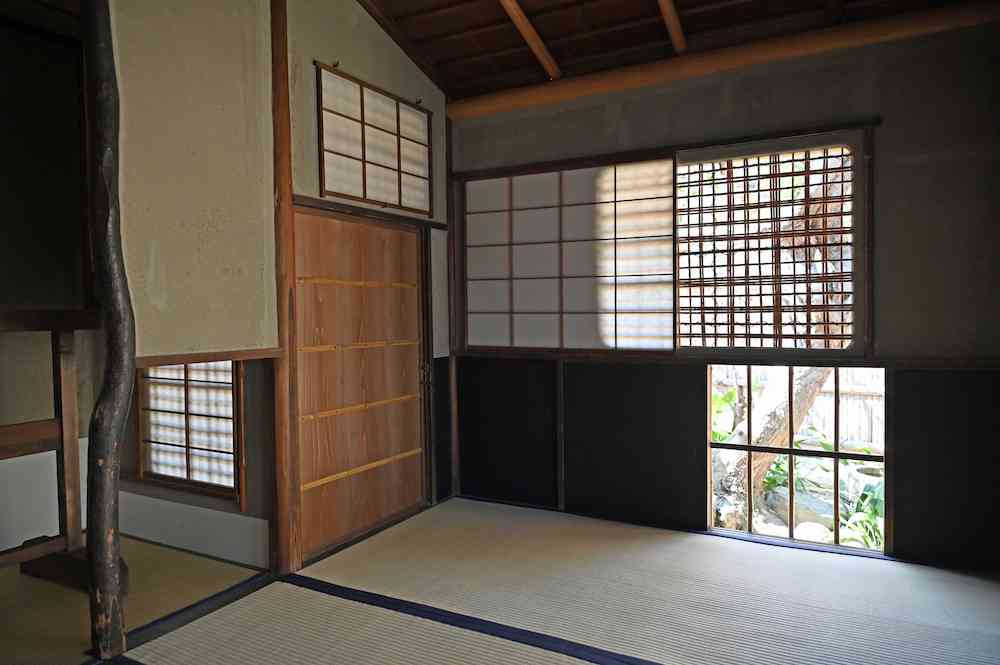
Windows in tea ceremony rooms include shimoji-mado style, which resemble the fine latticework that underlies clay walls, renko-mado style, which are made of thin wood latticework arranged vertically or horizontally, and koshimado style, which have broad horizontal and vertical lattices, as seen in modern shoji screens.
In particular, shimoji-mado style accentuates the tea ceremony room's character. How about reproducing the latticework of an inner sliding door, which is placed on the inside of a regular window, in the style of a ground window?
3-4. Points to keep in mind
When building a tea ceremony room in a home, the strength of the structure and various regulations must be carefully considered. However, it is difficult for the client to confirm these factors while planning the tea ceremony room. Therefore, we recommend that you consult with an architect or other specialist as soon as possible after you have an idea of what you would like your tea ceremony room to look like.
An expert will check the building strength and regulations not only for the floor plan, but also for the ceiling and wall finishes, furnace installation, and other details to come up with a tea ceremony room. However, not just any expert can do. An expert who has a lot of experience working on actual tea ceremony rooms will be able to propose a great plan based on their experience. Be sure to find an expert you can rely on while checking what kind of tea ceremony rooms they have actually built.
japanesse-architects.com can introduce you to architects who actually have experience in building houses with tea ceremony rooms. Please contact us through japanesse-architects.com's architect introductions.
4. 10 houses with a tea ceremony room built by architects
Here are 10 examples of houses with tea ceremony rooms by architects that japanese-architects.com is proud to present.
4-1. 3 examples of elegant and tasteful Shoin tea ceremony rooms



This is an authentic tea ceremony room built as an annex. Designed as an integral part of the garden, you can enjoy the tea ceremony room including the dewy ground.
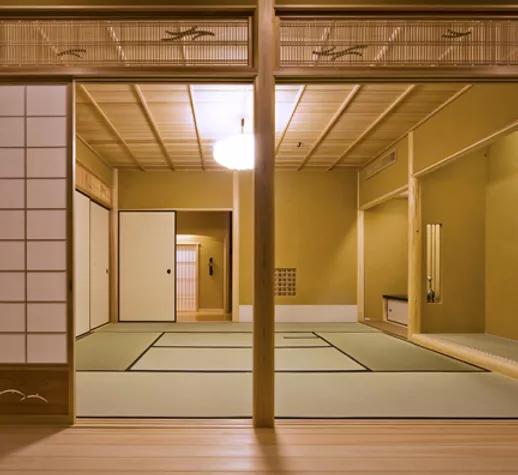


This is a spacious tea ceremony room built in a classy Japanese-style house. The Shoin tea ceremony room is in harmony with the building and shows the owner's attention to detail throughout.



Afer passing through the crawl-in entrance, you will find a small tea ceremony room, and crossing a further corridor, you will reach a large tea ceremony room. Visitors can enjoy both the Soan tea ceremony room and the Shoin tea ceremony room.
4-2. 3 examples of Soan tea ceremony rooms to enjoy Wabi
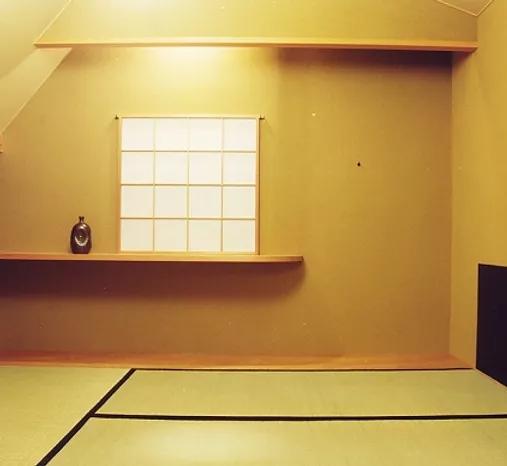


A tea ceremony room is located in the back of the shed of a house built on a narrow lot of 15 tsubo. The tea ceremony room is a natural expression of a Soan tea ceremony room that eliminates wastefulness.



The design allows visitors to spend time looking at both the tea ceremony room and the tea garden from a table with a hearth. The tea ceremony room has a separate ceiling finish and you can oversee the owner's attention to detail.
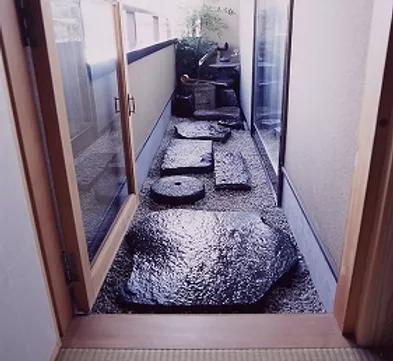


The second-floor balcony has an dewy ground with a stone basin, and although the space is limited, the flow line to the tea ceremony room can be enjoyed. The ceiling height was also changed to create a magnificent Soan tea ceremony room.
4-3. 2 examples of tea ceremony rooms in modern buildings
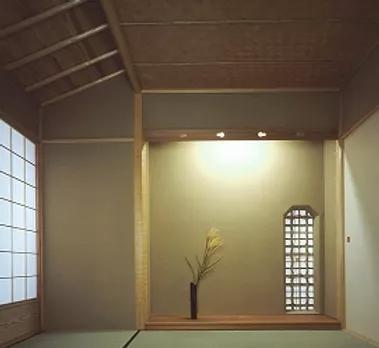


This tea ceremony room was built inside a model room, and details such as the hand basin and decorative attic have been carefully considered. It is a modern Japanese-style building with a distinctive exterior and environmentally friendly materials.
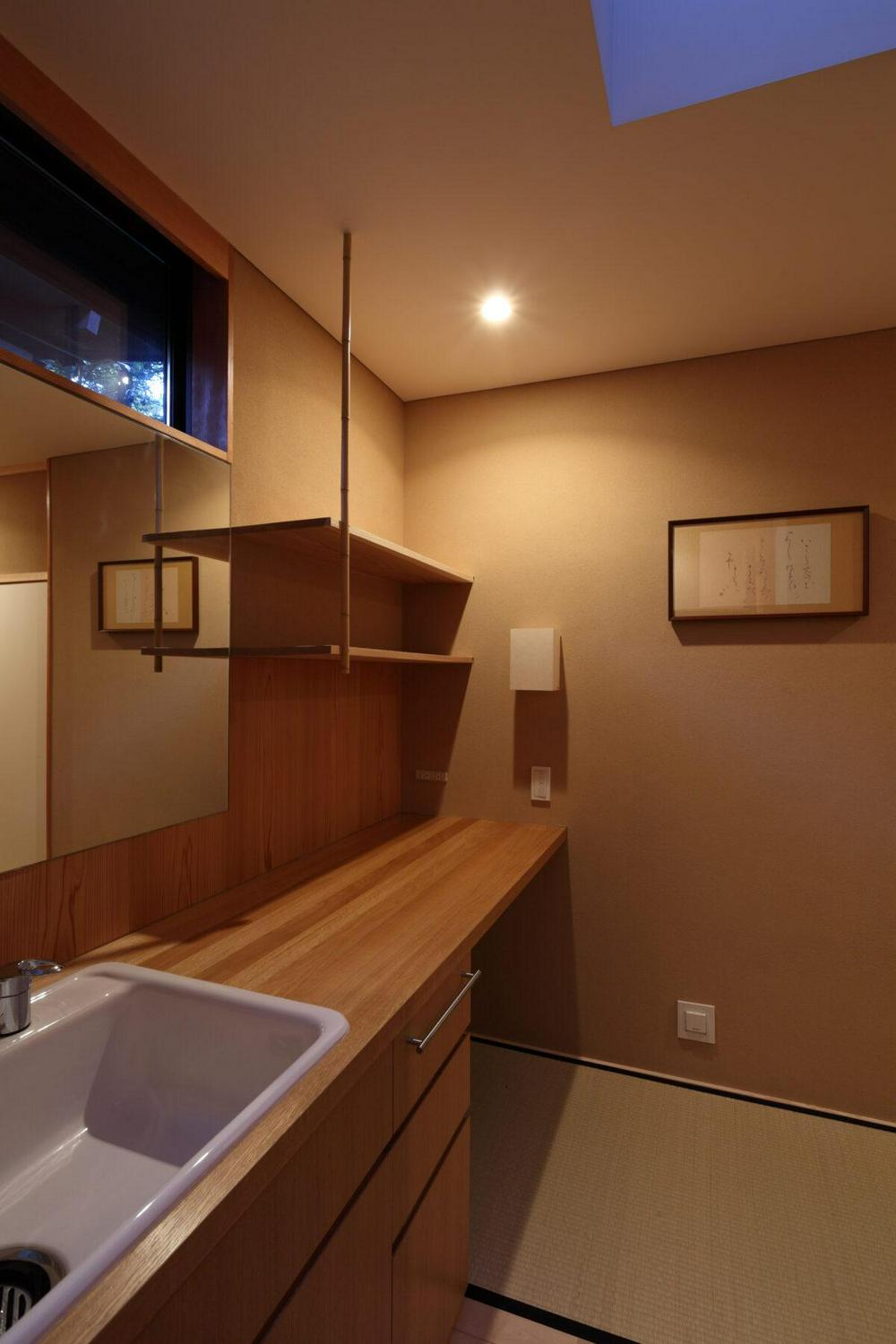


This is an example of a tea ceremony room set up in a villa, a tea ceremony room to be enjoyed in a space away from everyday life. The water room has been arranged for use in everyday life.
4-4. 2 examples of tea ceremony rooms to add to your current residence
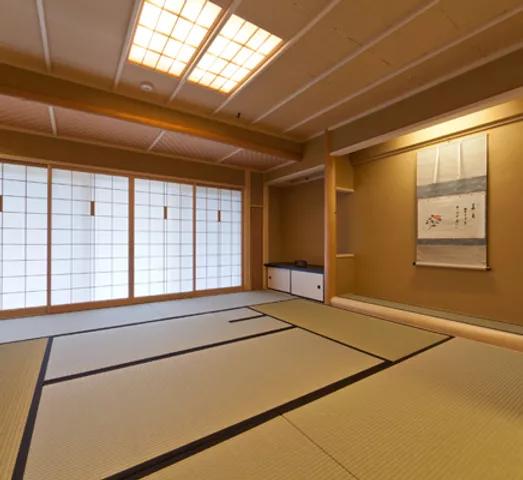


This is a formal tea ceremony room with a large hall built in a condominium. The authenticity of the tea ceremony room, which also includes a water room, makes it hard to believe that it is inside a condominium.
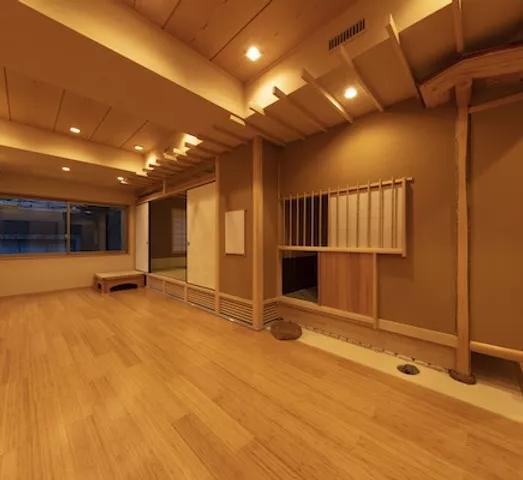


A multi-purpose tea ceremony room on one floor of an RC house, with a hall, a small room, and a water room. Although it is an indoor space, it is entered through an overpass via stepping stones.
5. Summary
The tea ceremony room is a luxurious space to enjoy elegance and Wabi away from everyday life. Each part of the tea ceremony room has its own historical significance, and the more you learn about it, the more you will be fascinated by the depth of the tea ceremony room.
At first glance, it may seem difficult to create a tea ceremony room in your house, but as you can see from the examples shown here, many people have done so in a way that suits their homes. Tea ceremony rooms can be freely arranged according to the conditions of the residents and their home.
japanesse-architects.com introduces architects with a wealth of experience in tea ceremony room design, who can make proposals that match your budget and site conditions, as well as your preferences. If you are considering a tea ceremony room for your home, please contact us.
Let's talk with our architectural advisor.
"Then how do I actually get a tea ceremony room in my house?" "Who are the professionals who can build a tea ceremony room that fits our needs?" If you are wondering these questions, please consult with a japanese-architects.com architectural advisor.
Our architectural advisors from design firms will listen to your concerns and wishes. Of course, you are welcome to consult with us even if you just want to ask a simple question such as, "I am having trouble with this." If you would like to hear from a professional, or would like to have an experienced person or a third party to take a look at your project, please feel free to take advantage of our free consultation.
In order to build a house without regret, it is recommended that you ask for a professional opinion at least once.


